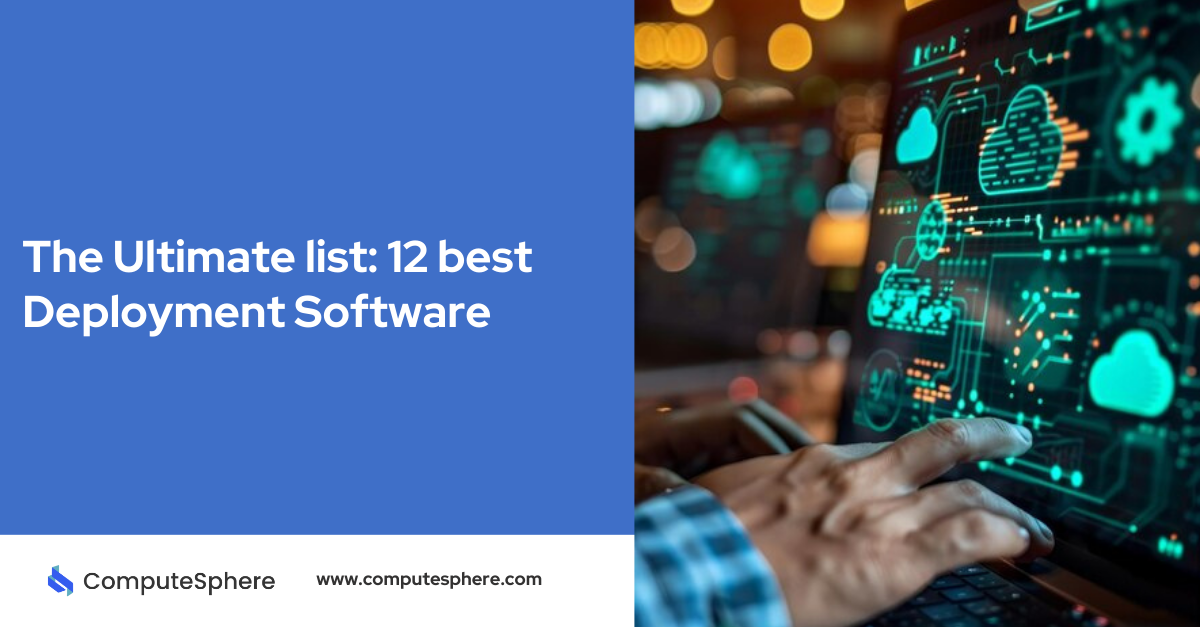Securing Cloud Computing Environments: Best Practices and Trends

Cloud computing has become important to business operations, providing space for scalability, flexibility, and cost savings. However, with these benefits comes the need for securing cloud computing environments. As more organizations migrate to the cloud, the role of cloud computing companies in ensuring powerful security measures becomes very important.
In this article, we will explore the best practices and emerging shifts in cloud security, providing insights into how businesses can safeguard their data and applications.
Understanding Cloud Security
Cloud security includes the technologies, policies, controls, and services that protect cloud data, applications, and infrastructure from threats. There are three main types of cloud environments:
Public: Public clouds are operated by third-party cloud service providers, offering services over the Internet.
Private: Private clouds are specific to a single organization, providing greater control and security.
Hybrid: Hybrid clouds combine public and private cloud elements, allowing for data and application portability.
Common security threats in cloud environments include data breaches, account hijacking, insecure interfaces, and Denial of Service (DoS) attacks. Understanding these threats is more important for developing effective security strategies.
Best Practices for Securing Cloud Computing Environments

Data Encryption
Encryption is an important practice in securing cloud computing environments. It involves converting data into a coded format to prevent unauthorized access. Encrypting data both in transit and at rest ensures that sensitive information is protected whether it's being transferred over the network or stored on cloud servers. Techniques such as SSL/TLS for data in transit and Advanced Encryption standards AES for data at rest are commonly used. Cloud computing companies often provide built-in encryption tools and services to help businesses secure their data.
Identity and Access Management (IAM)
Implementing IAM policies is equally important for controlling who has access to cloud resources. Role-based access control (RBAC) allows organizations to assign permissions based on user roles, ensuring that only authorized personnel can access sensitive information. Multi-factor authentication (MFA) adds an extra layer of security by requiring additional verification methods beyond just a password. Properly configured IAM policies help prevent unauthorized access and potential breaches.
Regular Security Audits and Assessments
Continuous monitoring and regular security audits are essential for maintaining a secure cloud environment. Automated security assessment tools can help identify vulnerabilities and misconfigurations in real-time. Regular audits ensure that security policies are being followed and that any weaknesses are promptly addressed. Cloud computing companies often provide monitoring and logging services to help businesses keep track of their security posture.
Patch Management
Keeping software up to date is very important for cloud security. Regularly applying patches and updates helps protect against known vulnerabilities and exploits. Automated patch deployment tools can streamline this process, ensuring that all systems remain secure without manual intervention. Patch management should be part of a broader vulnerability management strategy to minimize the risk of security breaches.
Network Security
Securing the network infrastructure is also important for protecting cloud environments. Firewalls and intrusion detection systems (IDS) help monitor and control incoming and outgoing traffic, blocking potential threats. Network segmentation and micro-segmentation further improve security by isolating critical resources and limiting the spread of attacks. Implementing virtual private networks (VPNs) can also help secure data transmission between on-premises and cloud environments.
Backup and Disaster Recovery
Regular data backups are more than important for recovering from data loss incidents. A comprehensive disaster recovery plan assures that businesses can quickly restore operations in the event of a breach or other disaster. Cloud computing companies often provide backup and disaster recovery services, enabling businesses to implement powerful recovery strategies. Regular testing of disaster recovery plans is crucial to ensure their effectiveness.
User Training and Awareness
The possibility of human error is a significant factor in many security incidents. Providing regular cybersecurity training and awareness programs for employees helps reduce the risk of accidental breaches. However, training should cover best practices for password management, recognizing phishing attempts, and safe data handling procedures. Conducting regular phishing simulations can help reinforce these lessons and improve overall security awareness.
Emerging Trends in Cloud Security
Zero Trust Architecture
Zero Trust Architecture is gaining favor as a powerful security model. It operates on the principle that no entity, inside or outside the network, should be trusted by default. Implementing Zero Trust involves verifying the identity and integrity of devices, users, and systems before granting access. This model improves security in cloud environments by limiting the risk of unauthorized access and lateral movement within the network.
AI and Machine Learning in Security
Artificial intelligence (AI) and machine learning (ML) are increasingly being integrated into security solutions. These technologies improve threat detection and response by analyzing large volumes of data to identify patterns and anomalies indicative of malicious activity. AI-driven security tools can automate threat hunting, reducing response times and improving overall security posture. Examples include automated malware detection, behavior analysis, and predictive analytics.
Secure Access Service Edge (SASE)
Secure Access Service Edge (SASE) is an emerging model that combines network security services into a single cloud-delivered solution. SASE integrates functions such as secure web gateways, firewall-as-a-service, and zero-trust network access. This model is particularly beneficial for remote work and distributed environments, providing consistent security policies and protections regardless of user location.
Serverless Security
Serverless computing offers scalability and efficiency but also presents unique security challenges. Securing serverless environments involves ensuring that functions are executed in a secure context, with proper access controls and least privilege principles. Best practices for serverless security include securing API gateways, monitoring for unusual behavior, and using security frameworks designed for serverless architectures.
Compliance and Regulatory Trends
Staying compliant with these regulations is a continuous challenge for cloud security. New regulations, such as the California Consumer Privacy Act (CCPA) and the General Data Protection Regulation (GDPR), impose strict requirements on data handling and privacy. Cloud computing companies must provide tools and services that help businesses achieve compliance including data encryption, access controls, and audit logging to demonstrate adherence to regulatory standards.
The Role of Cloud Computing Companies in Security
Cloud computing companies play a crucial role in securing cloud environments. They offer a range of security services, from encryption and IAM to advanced threat detection and compliance management. The shared responsibility model defines the division of security responsibilities between the cloud provider and the customer. While providers manage the security of the cloud infrastructure, customers are responsible for securing their data and applications within the cloud.
Evaluating and choosing a secure cloud provider involves assessing their security offerings, compliance certifications, and incident response abilities. Businesses should look for providers with a strong track record of security innovation and customer support.
Conclusion
Securing cloud computing environments is one of the best practices for your tech infrastructure security. You can follow the above practices and trends, to protect your data and applications in the cloud. Cloud computing companies provide the necessary tools and services to improve security measures. As threats continue to emerge, organizations need to remain watchful and adaptable, ensuring their cloud environments remain secure against potential attacks.
Contents
Built for Builders. Priced for Startups.
Tired of unpredictable cloud bills? ComputeSphere offers modular, fixed-cost cloud hosting that grows with your startup—no DevOps headaches, no surprises.
Get StartedShare this article
Browse Some Related Blogs
Relevant and related contents you can read









